The city of Charleston was founded in 1670, making it the oldest city in South Carolina. Given its early history, it’s a miracle it survived at all: smallpox in 1698; in 1699 an earthquake that caused a fire that destroyed a third of the town; during rebuilding, a yellow fever outbreak that killed 15% of its inhabitants. Yellow fever was a recurring problem during the first half of the 18th century, as was malaria into the 1950s!
The City Market is a historic market that dates to the 1790s. Though it doesn’t look like much from this end, it stretches for four city blocks! We walked through repeating to ourselves, “we can’t buy anything, we live in a van.”
The cover photo is the Custom House. Though authorized in 1849, it wasn’t completed until 30 years later. Built in the Greek Revival style, it is a reminder of the busy port city Charleston once was. It is built in a cruciform shape, measuring 259 feet on the east-west axis and 152 feet on the north-south axis.
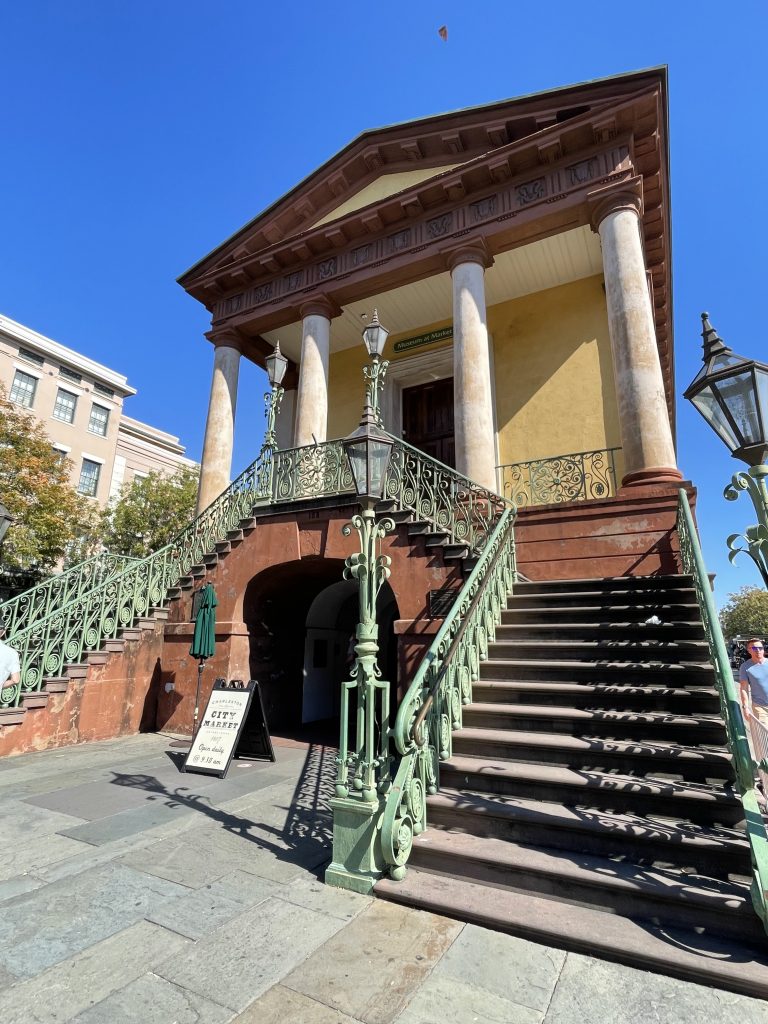
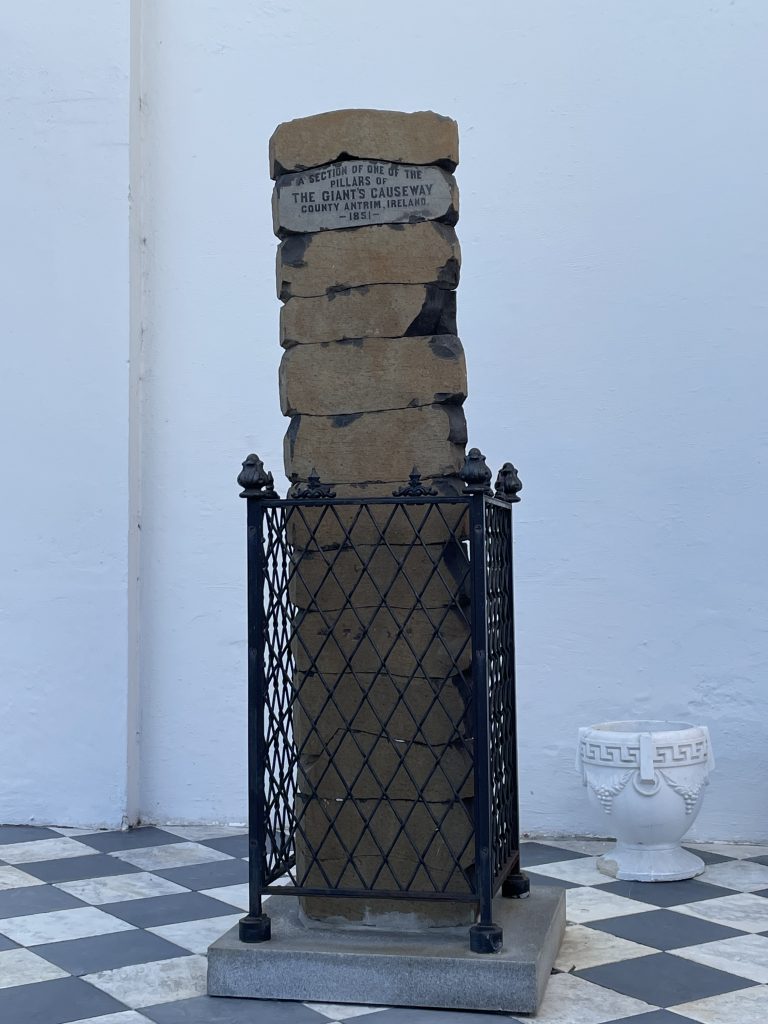
The Giants Causeway in Ireland is made up of 40,000 basalt columns – except this one that for some reason was relocated to Charleston in 1851. I could find no info on the who/what/why on this topic.
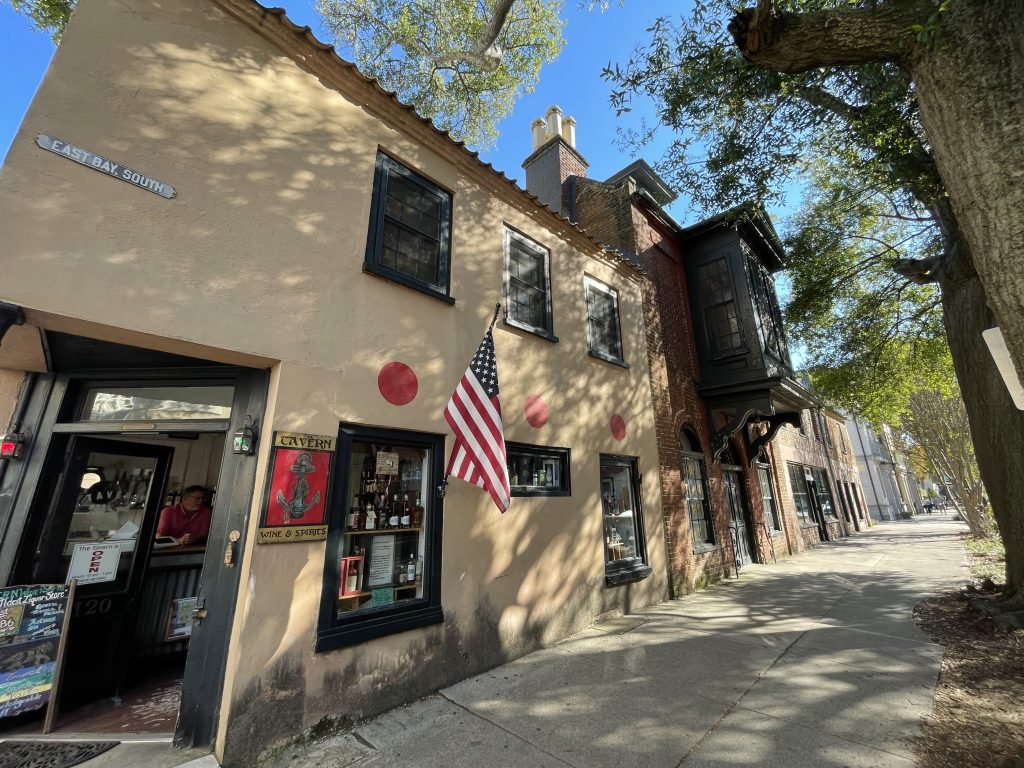
The Tavern at Rainbow Row claims to be the oldest liquor store in the United States. Though changing owners and forms many times since 1686, it has never stopped selling liquor, even during prohibition. I’ll give you one guess who the guy behind the cash register could be talking to.
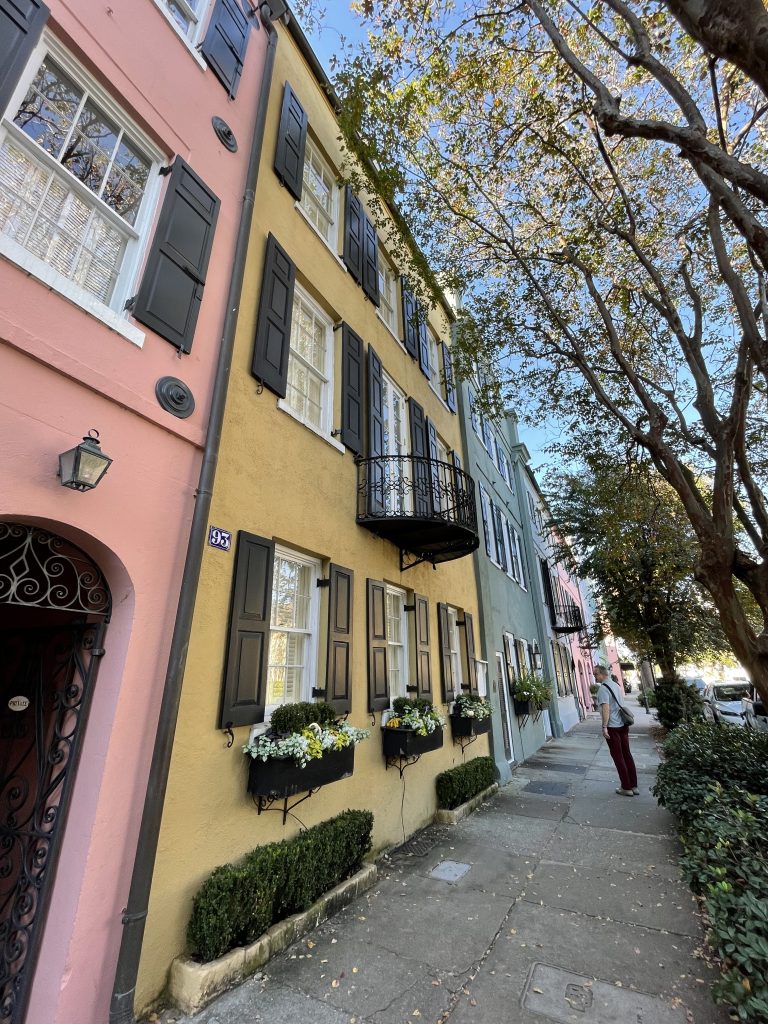
Why do tourists like a Rainbow Row so much? Lots of cities have them. Sure, they’re pretty, and it’s nice to think of homeowners working together to create a look. But is it a destination? Tourist maps seem to think so.
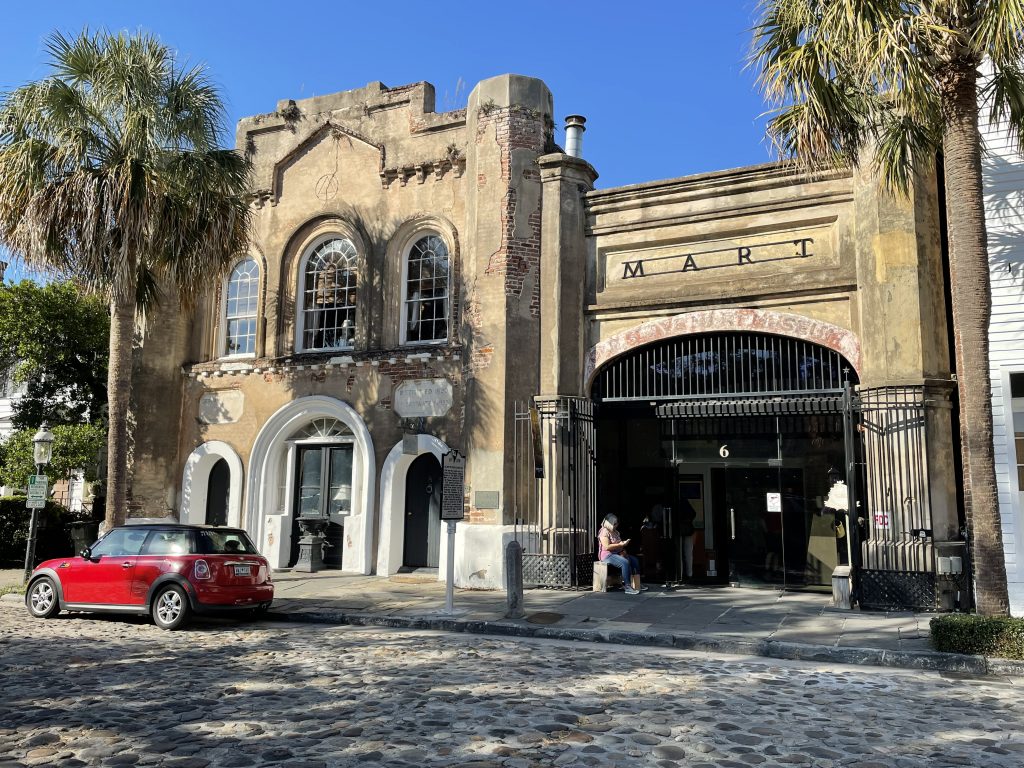
Did you know that an “Act Prohibiting the Importation of Slaves” took effect in 1808, which created a domestic market in slave trading? Charleston was a major port in this domestic market leading up to the Civil War, and the Old Slave Mart Museum was a scene of the crime from 1856 to 1863.
The rapidly growing sugar and cotton plantations in the South fueled the domestic slave market. Prior to 1856 the sales (ugh) took place outside, but an 1856 city ordinance prohibited public sales. Thus several “sales rooms” opened up. Originally at this location for this purpose was Ryan’s Mart, but when he sold the business in 1859, the current building was constructed, for use as the same purpose.
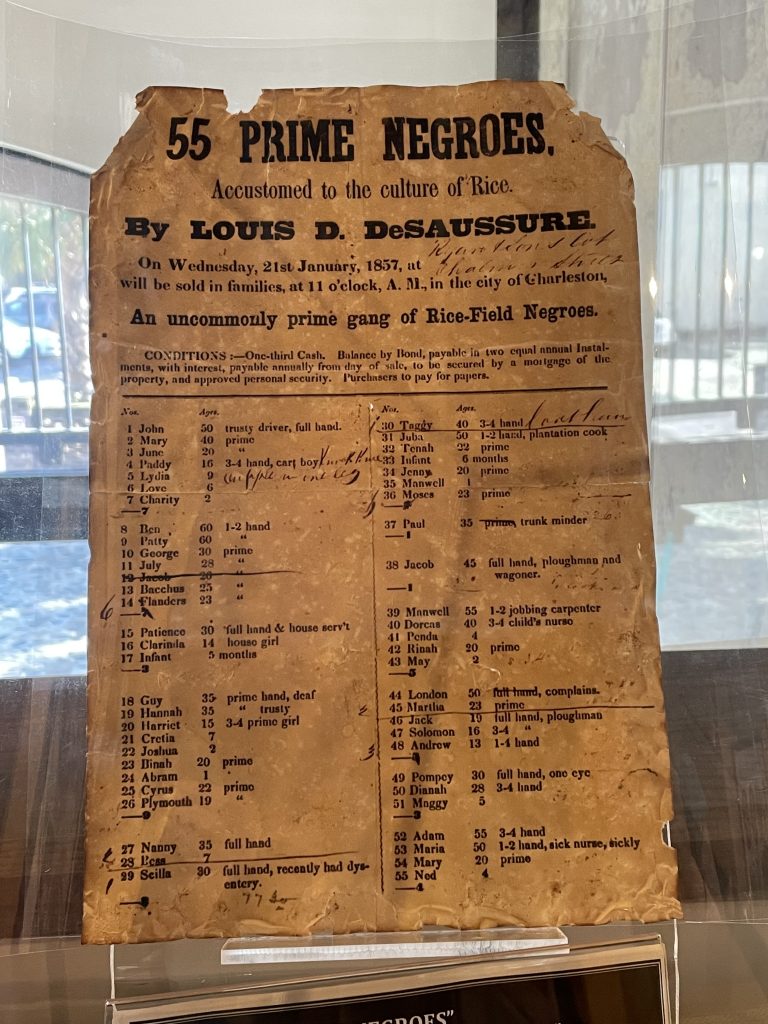
The small museum has two floors of information, but we thought it lacked emotional punch.
We had previously seen the emotionally powerful and gut-wrenching display at The National Civil War Museum in Harrisburg, PA, and this museum didn’t hold up to that.
I feel like a museum like this ought to be absolutely horrifying, and while portions were, it was overall very clinical in its presentation.
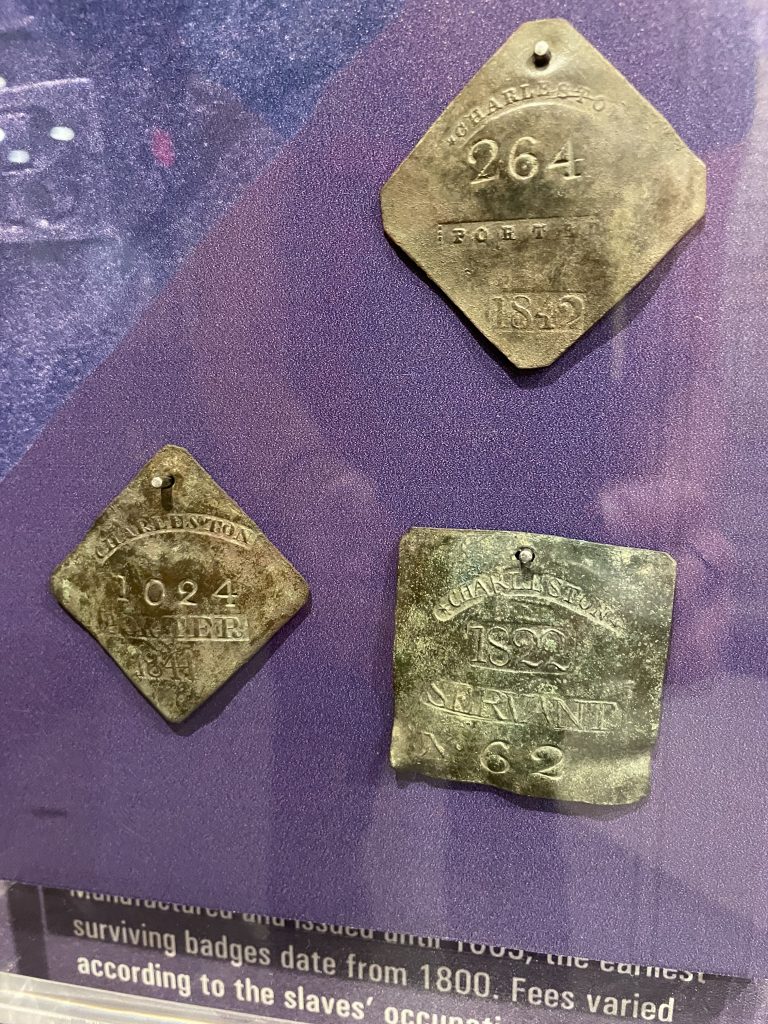
We stopped at the Charles Pinckney National Historic Site, only to discover that their posted hours are for the grounds, not the visitors center, which was in fact closed. We looked through some windows and meandered a bit, then sat in a pavilion to work, during which time we watched many other people come and go who had made the same mistake as us.
Charles Pinckney (1757-1824) was a founding father who made major contributions to the United States Constitution. He also fought in the American Revolution and was held prisoner for a time. The property, Snee Farm, was a rice and indigo plantation, until it was lost to debts in 1816. A subsequent owner demolished existing buildings and built the Coastal Cottage in 1828, which now serves as the visitor’s center.
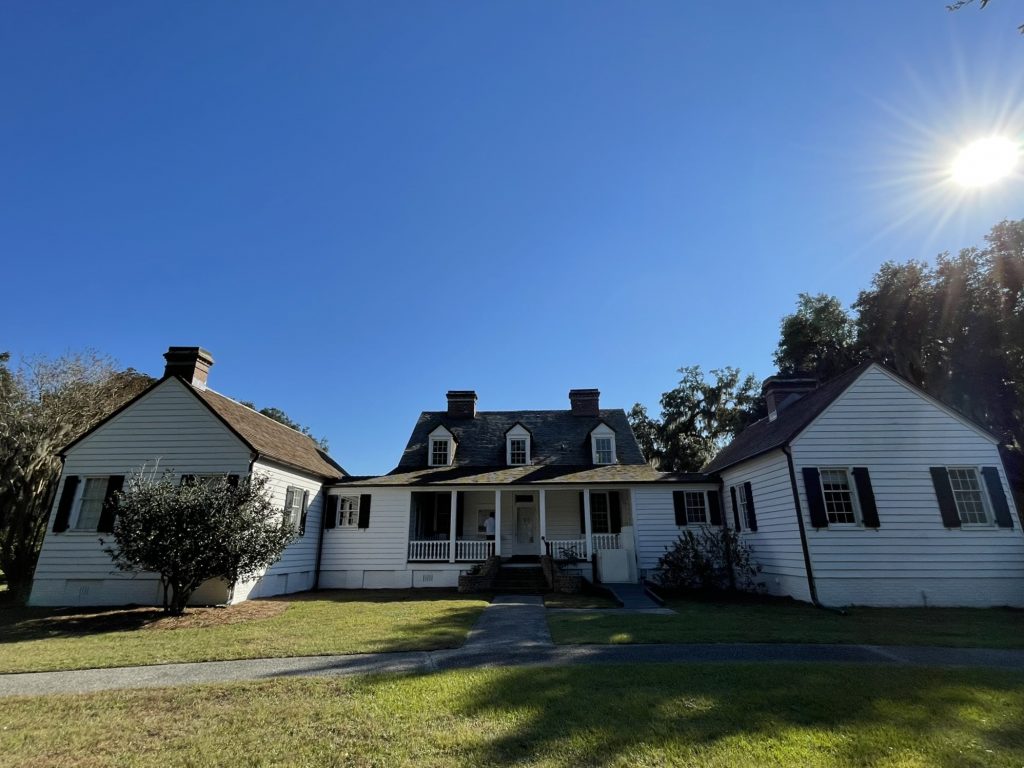
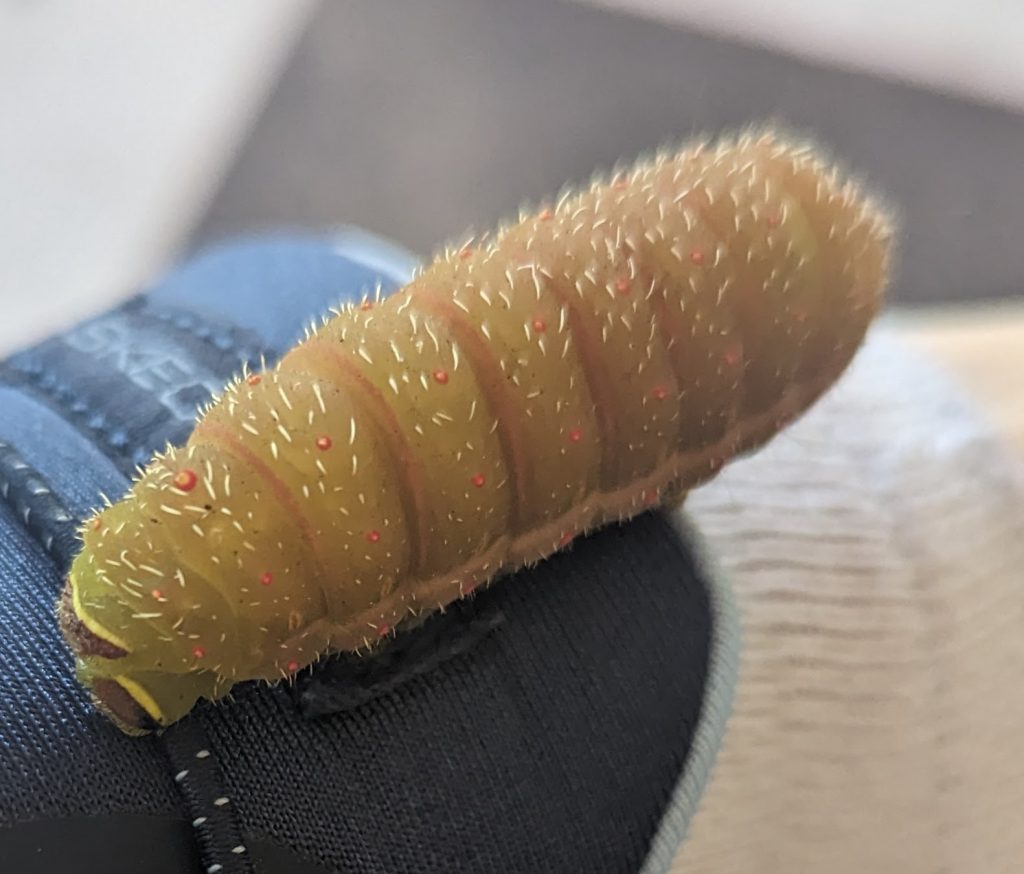
Probably the most exciting part of our stop at the Pinckney site was me discovering this amazing caterpillar on my shoe. Doug uploaded a photo for identification, which returned “Skecher”, which was indeed the shoe under the caterpillar. I’m not sure if I’m impressed by this or not. I think it’s a Luna Moth Caterpillar.
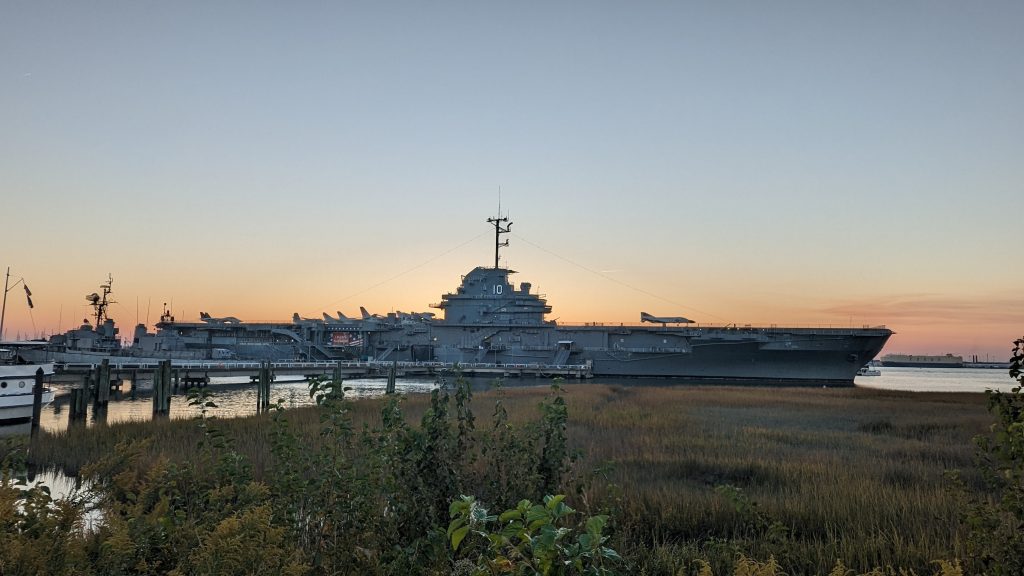
The USS Yorktown sits across the river from the Charleston. Commissioned in 1943, It was the tenth aircraft carrier to serve in the United States Navy, and it had significant participation in the Pacific offensive in World War II. It was modernized in the 1950s, and later served in the Vietnam war. It was this ship that recovered the Apollo 8 astronauts and capsule in 1968. She was decommissioned in 1970, and moved to this location in 1975. We just stopped to get a look, but did not take a tour.
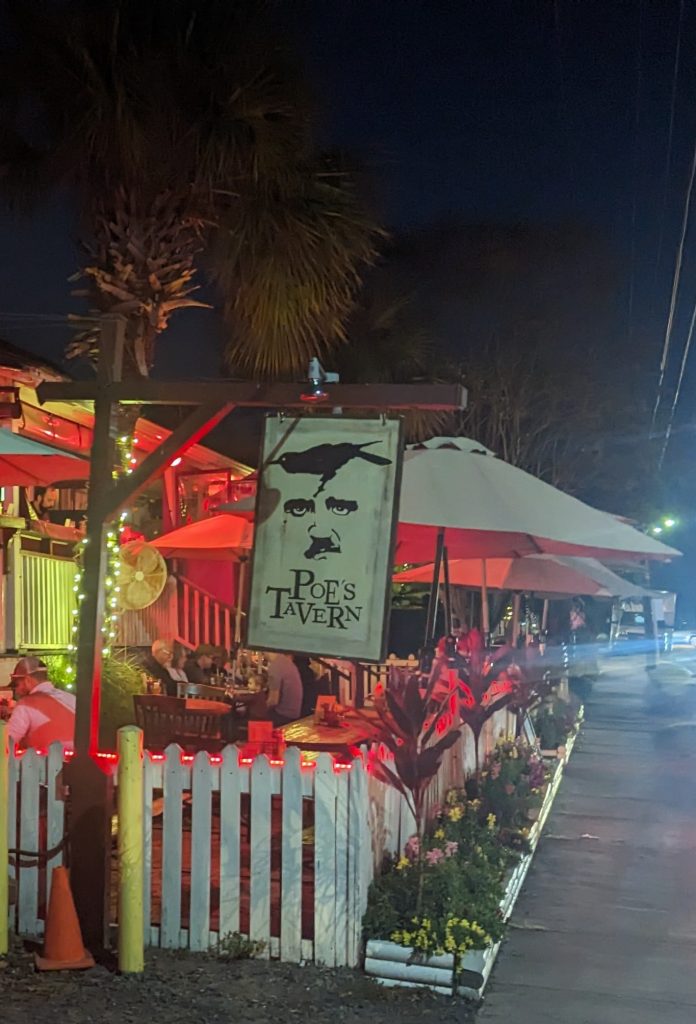
When an area has a claim to a famous writer but no actual sites to visit, what is there to do but to name a Tavern after him and hope that draws people in?
That would be how we had dinner at Poe’s Tavern on Sullivan’s Island. The Tavern can best be described as a tribute to Poe, with many decorations and menu items featuring or referencing him and his stories. Doug had a burger called “The Pit and the Pendulum” and reported that it was the most melancholy burger he’s had to date. The restaurant itself does not have any actual connection with Poe.
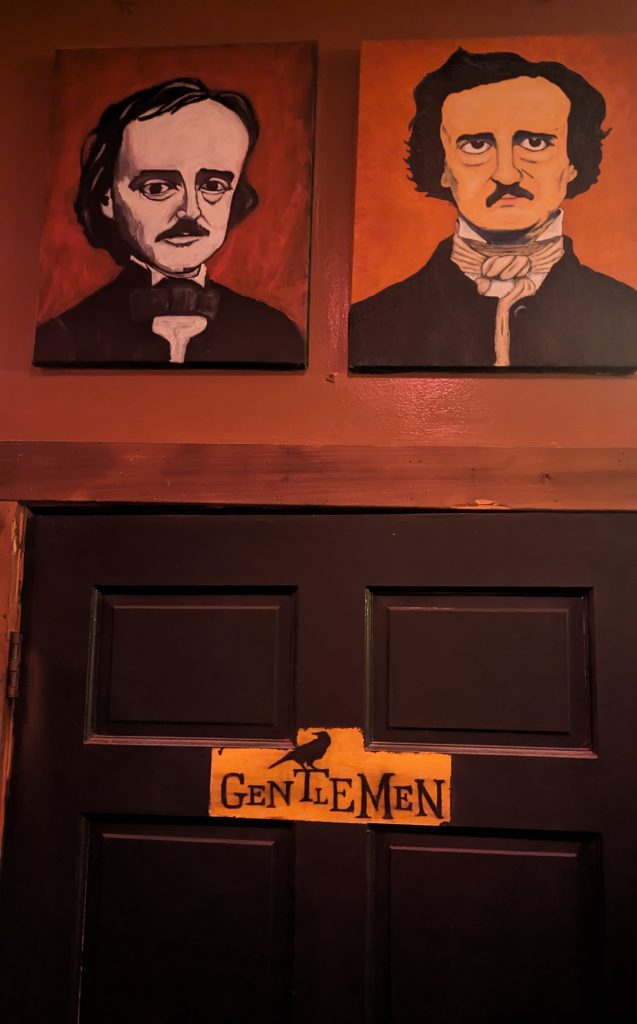
However, Edgar Allan Poe did spend a year on Sullivan’s Island when he was assigned to Fort Moultrie as a soldier in 1827. It’s so hard to imagine Poe a solider, and as he only served two years of his five-year commitment, it seems he couldn’t imagine himself a soldier, either.
Poe’s stories The Balloon Hoax and The Oblong Box both reference Sullivan’s Island, but his story The Gold-Bug is actually set there.




